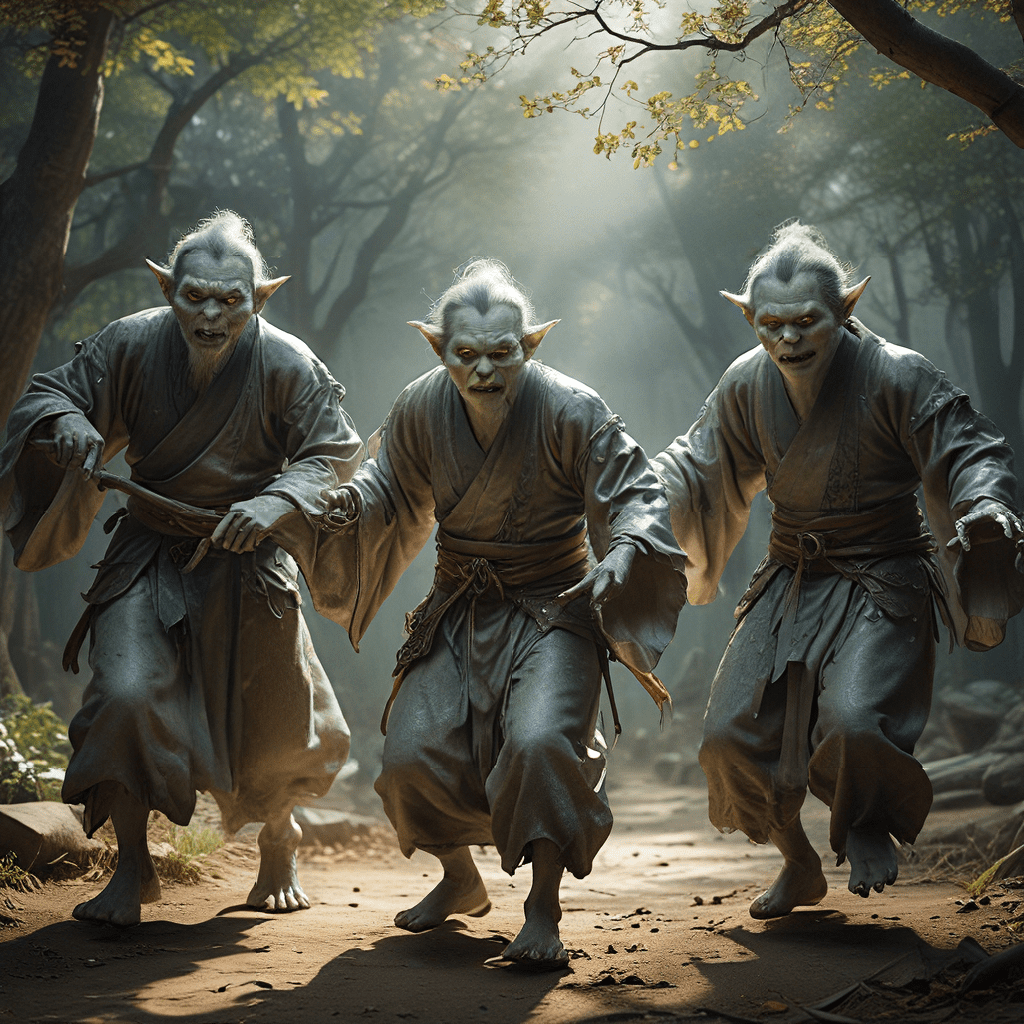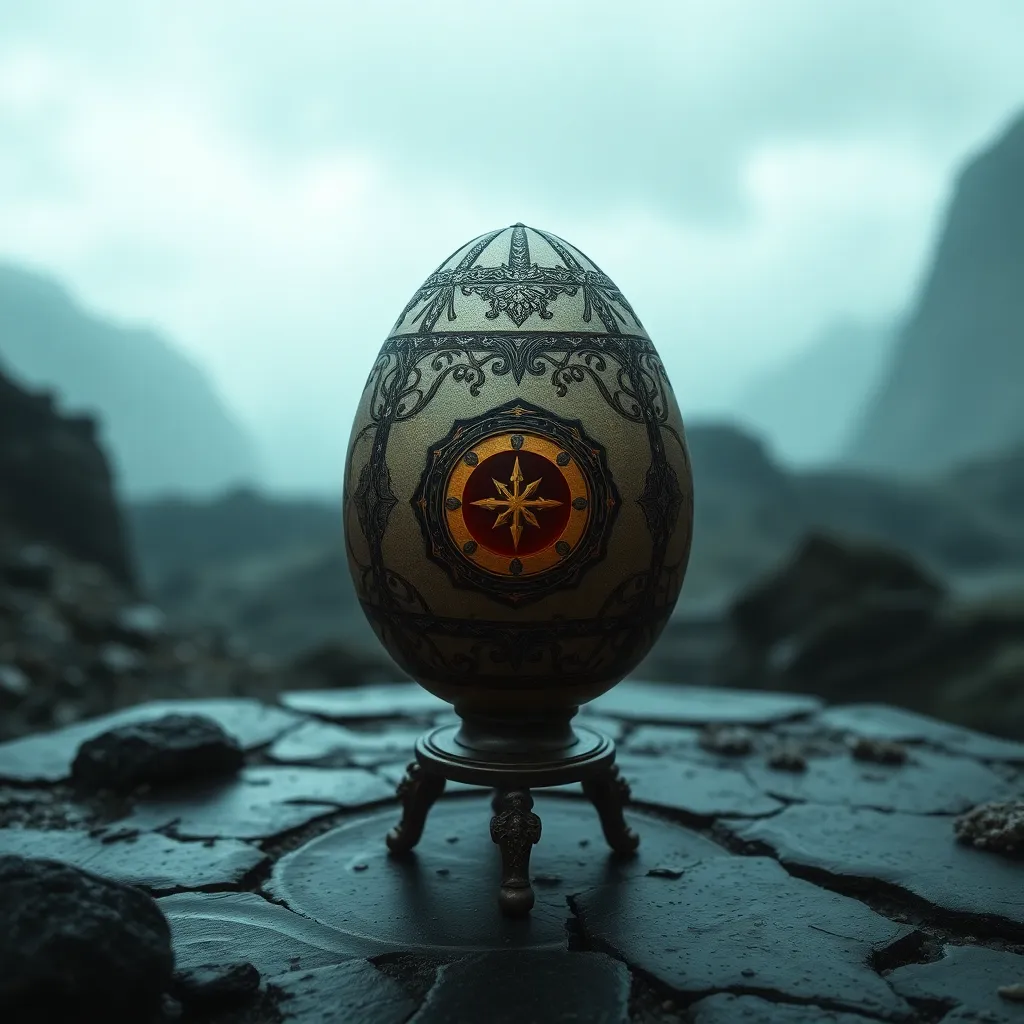Korean Folklore: Unmasking the Goblins and Ghosts
1. Introduction: A World of Spirits and Myth
Korea, a land of breathtaking landscapes and rich cultural heritage, is also a realm where the supernatural thrives. For centuries, Koreans have shared stories and beliefs about beings that exist outside the realm of human perception. From mischievous goblins to vengeful ghosts, Korean folklore paints a vivid tapestry of spirits that have shaped the nation's traditions, art, and even daily life.
These supernatural beings, often rooted in ancient animistic beliefs, are woven into the fabric of Korean culture. They inhabit mountains, rivers, and forests, and their presence is felt in the everyday lives of ordinary people. Whether it's the mischievous "Dokkaebi" (goblin) who might steal a farmer's crops, or the vengeful "Gwisin" (ghost) seeking retribution, these creatures hold a powerful sway over the human imagination.
2. The Goblin (Dokkaebi): Mischievous Tricksters and Guardians
The "Dokkaebi," a mainstay of Korean folklore, is a captivating and often contradictory figure. Often depicted as short, with horns and a mischievous grin, the Dokkaebi are known for their unpredictable nature. They can be both helpful and harmful, bringing good fortune or wreaking havoc depending on their mood.
These goblins are associated with crossroads, mountains, and ancient burial grounds. They are often described as playful and mischievous, prone to pranks like hiding objects or causing minor disturbances. But they can also be benevolent, protecting travelers and granting wishes to those who are kind to them. The Dokkaebi's unpredictability has led them to be both feared and respected in Korean culture.
3. The Ghost (Gwisin): Shades of the Departed and Their Influence
Ghosts, known as "Gwisin," hold a prominent place in Korean folklore. Often associated with the dead who were wronged in life or died tragically, these ethereal beings are believed to wander the earth seeking justice or revenge. They are depicted as shadowy figures, often wearing white clothing, with a longing for peace.
Korean beliefs suggest that Gwisin can manifest in various ways, appearing as apparitions, causing unexplained noises, or even possessing living people. To appease restless spirits and avoid their wrath, Koreans perform ancestor rites, maintain family graves, and offer food and incense to appease the dead. The fear of Gwisin has profoundly impacted Korean customs and traditions, underscoring the importance of honoring the deceased and seeking harmony between the living and the dead.
4. Other Supernatural Beings: From Mountain Spirits to Water Demons
Beyond goblins and ghosts, Korean folklore encompasses a vast array of supernatural beings, each with its own unique characteristics and lore. These beings often represent the forces of nature, reflecting the profound respect Koreans have for the natural world.
"San Shin," the mountain spirits, are believed to protect mountains and forests. "Yongwang," the dragon kings, are said to reside in deep waters, wielding control over rain and floods. "Gumiho," the nine-tailed fox, is a cunning and powerful creature that can shapeshift and seduce humans. These beings, while often depicted as powerful and unpredictable, also play a vital role in maintaining the balance of the natural world.
5. The Shamanistic Tradition and the Role of Spirits
Korean shamanism, known as "Mudang," has long played a crucial role in mediating the relationship between humans and the spirit world. Shamans, often women, are believed to have the ability to communicate with spirits and influence their actions.
Through rituals and offerings, shamans can seek guidance from spirits, appease angry deities, or even heal the sick. The shamanistic tradition highlights the importance of understanding and respecting the spirit world, recognizing its influence on human affairs.
6. The Influence of Confucianism and Buddhism on Folklore
While animistic beliefs form the foundation of Korean folklore, Confucianism and Buddhism, introduced to Korea centuries ago, have significantly shaped the country's understanding of the supernatural. Confucianism, emphasizing social harmony and ancestor veneration, fostered a reverence for the deceased and the importance of maintaining ancestral rituals. Buddhism, with its focus on karma, reincarnation, and the cycle of life and death, infused Korean folklore with notions of spiritual journeys, celestial realms, and the consequences of one's actions.
The influence of these philosophies is evident in the portrayal of ghosts and spirits. While folklore often depicts ghosts as vengeful beings, Confucian and Buddhist teachings encourage compassion for the deceased, urging people to perform rituals to alleviate their suffering and guide them to a peaceful afterlife. The concept of karma also explains the misfortunes encountered by individuals, attributing them to the consequences of past actions, both in this life and previous ones. This blend of animistic beliefs and Confucian and Buddhist teachings has created a complex and nuanced understanding of the supernatural in Korean culture.
7. The Evolution of Supernatural Beliefs Over Time
Supernatural beliefs in Korea have evolved over time, reflecting changes in society, technology, and the influence of global trends. With the advent of modernization and urbanization, traditional beliefs have been challenged, and some supernatural beings, once prevalent in folklore, have become less prominent in contemporary narratives. For example, the prevalence of "Gumiho," the nine-tailed fox, has lessened, possibly due to changing societal values and perceptions of female figures in society.
However, recent years have seen a resurgence of interest in Korean folklore, fueled by the popularity of Korean dramas and films that feature supernatural themes. These narratives, while often drawing on traditional beliefs, often reimagine and re-interpret them, reflecting the contemporary anxieties and concerns of modern society. These stories can be seen as a way of grappling with the rapid pace of change and the challenges of modern life.
8. Goblins and Ghosts in Modern Korean Culture
Goblins and ghosts remain an integral part of modern Korean culture, appearing in popular media, art, and even everyday conversations. They are often used to convey themes of good versus evil, the importance of personal responsibility, and the consequences of greed and selfishness.
"Dokkaebi" (goblins), previously associated with mischief and pranks, are sometimes depicted as more complex figures, symbolizing rebellion against societal norms or representing the darker aspects of human nature. "Gwisin" (ghosts), while still evoking fear and respect, are also portrayed as victims of injustice, seeking retribution or redemption. These interpretations reflect a growing awareness of social inequalities and the complexities of human emotions.
9. The Psychological and Social Functions of Supernatural Beliefs
Supernatural beliefs serve a variety of psychological and social functions in Korean culture. They provide a framework for understanding the mysteries of life and death, offering explanations for events that seem inexplicable or beyond human control. The stories of goblins and ghosts can also serve as cautionary tales, reminding people of the consequences of their actions and the importance of living a virtuous life.
Furthermore, these beliefs foster a sense of community and shared identity. They provide common ground for people to connect with each other through shared stories and rituals. By acknowledging the presence of spirits, Koreans also express a deep respect for the natural world and the interconnectedness of all living things.
10. Conclusion: The Enduring Power of Korean Folklore
Korean folklore, with its captivating tales of goblins and ghosts, remains a powerful force in shaping the nation's cultural identity. These stories offer a glimpse into the rich history and traditions of Korea, reflecting its unique beliefs, values, and worldview. While some supernatural beings may seem more prevalent in the past, they continue to shape contemporary narratives and reflect the human fascination with the unknown, the unseen, and the mysteries of the universe.
Korean folklore is a timeless reminder that even in an increasingly technological world, humanity's desire to understand the world around us and our place within it endures, and the stories we tell ourselves play a vital role in shaping our understanding of the human experience.
FAQ
What is the difference between a Dokkaebi and a Gwisin?
A Dokkaebi is a mischievous goblin often associated with pranks and unpredictability, while a Gwisin is a ghost, usually associated with the deceased who died tragically or were wronged in their life.
Are all Dokkaebi evil?
No, Dokkaebi can be both helpful and harmful, depending on their mood and the actions of those they encounter. While often known for mischief, they can also be benevolent, protecting travelers and granting wishes.
How does Korean folklore influence Korean culture today?
Korean folklore continues to inspire modern storytelling, art, and even everyday conversations. Its themes of good versus evil, personal responsibility, and the consequences of greed are still relevant in modern society.
Are Korean supernatural beliefs still widely believed in today?
While traditional beliefs are less widespread in urban areas, they are still present in rural communities and are often incorporated into popular media and entertainment.
How can I learn more about Korean folklore?
There are many resources available to learn more about Korean folklore, including books, articles, websites, and documentaries. You can also explore Korean traditional arts and crafts, such as masks, paintings, and storytelling, which often depict supernatural beings.




